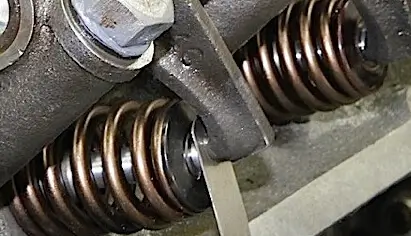What Is Valve Lash and Why Is It Needed?
Valve Lash Tech Talk
Short 3 Part Video Series
PART 1
PART 2
PART 3
What is Valve Lash?
Valve lash, or valve clearance, is an important aspect of maintaining the proper operation and longevity of your engine. It refers to the gap between the valve tip and the mechanical follower or tappet. The clearance ensures that the valve can slowly accelerate off and back onto the valve seat without making noise during the take-up and seating events. It is best to set the valve clearance while the engine is hot and at operating temperature using a feeler gauge.
On modern overhead cam engines, adjusting the lash while the cylinder head is assembled is not possible.
Therefore, it must be set cold, and the camshaft must be designed accordingly. It is essential to follow the camshaft manufacturer's recommendation for valve seating velocities. In Part 2, we will delve deeper into this topic.
How is Lash Determined?
Crucial to the performance and longevity of an engine. It is determined by the thermal growth of the engine and the camshaft manufacturer's design. To avoid valvetrain components bouncing around excessively, the cam lobes are designed with an appropriate and effective lash ramp height.
Following the cam designer's recommendations on lash setting is highly recommended. Ideally, valve lash should be set hot at the valve, which is simple in engines with adjustable set screws or rockers like the Honda B series.
Therefore, for engines with direct acting lifters or buckets, lash must be set cold through specific methods like using bucket and shim or setting valve tip heights. In all cases, the priority is for the cam follower to pick up on the lash ramp first, ensuring the best timing and least wear possible.
Benefits of Hydraulic vs Mechanical Lifters
Hydraulic lifters offer flexibility for OEM manufacturers with variations of valve tip heights and base circles, allowing for looser manufacturing and assembly tolerances. This leads to simpler aftermarket installation of camshafts, as there is no lash to set.
However, in high rpm builds or aggressive applications, where oil or spring control gets pushed to their limits, the lifter can pump up and hold the valve open, or bleed down and cause unwanted lash. In these cases, a conversion to solid lifters and cam profiles may be better.
Solid lifters are less complicated with a lighter weight, lending themselves well to higher rpm applications. However, they require more setup and maintenance. If a solid lifter profile is used in a hydraulic valve-train, the extra duration results in dynamic compression loss and unnecessary valve overlap.
Overall, hydraulic profiles have very little or no ramp at all, which can lead to catastrophic valvetrain failure if used in a mechanical lifter setup.

Need A Copy?
Due to the level of information, we recommend to Download PDF direct to read when you need it.














